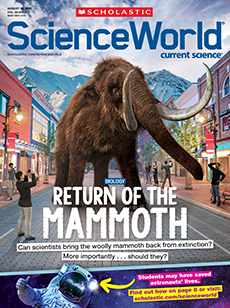As night fell, Harriet Nimmo and an armed guard walked quietly through the brush near Kruger National Park in South Africa. They were protecting a pangolin named Aura as she fed on ants. Aura was rescued from poachers and brought to Rhino Revolution, where Nimmo works as a conservationist. Her organization cares for threatened animals, like Aura, until they’re healthy enough to return to the wild.
Night fell near Kruger National Park in South Africa. Harriet Nimmo and an armed guard walked quietly through the brush. They were protecting a pangolin named Aura as she ate ants. Aura was rescued from poachers and brought to Rhino Revolution. Nimmo works there as a conservationist. Her organization cares for threatened animals, like Aura. When they’re healthy enough, they return to the wild.

